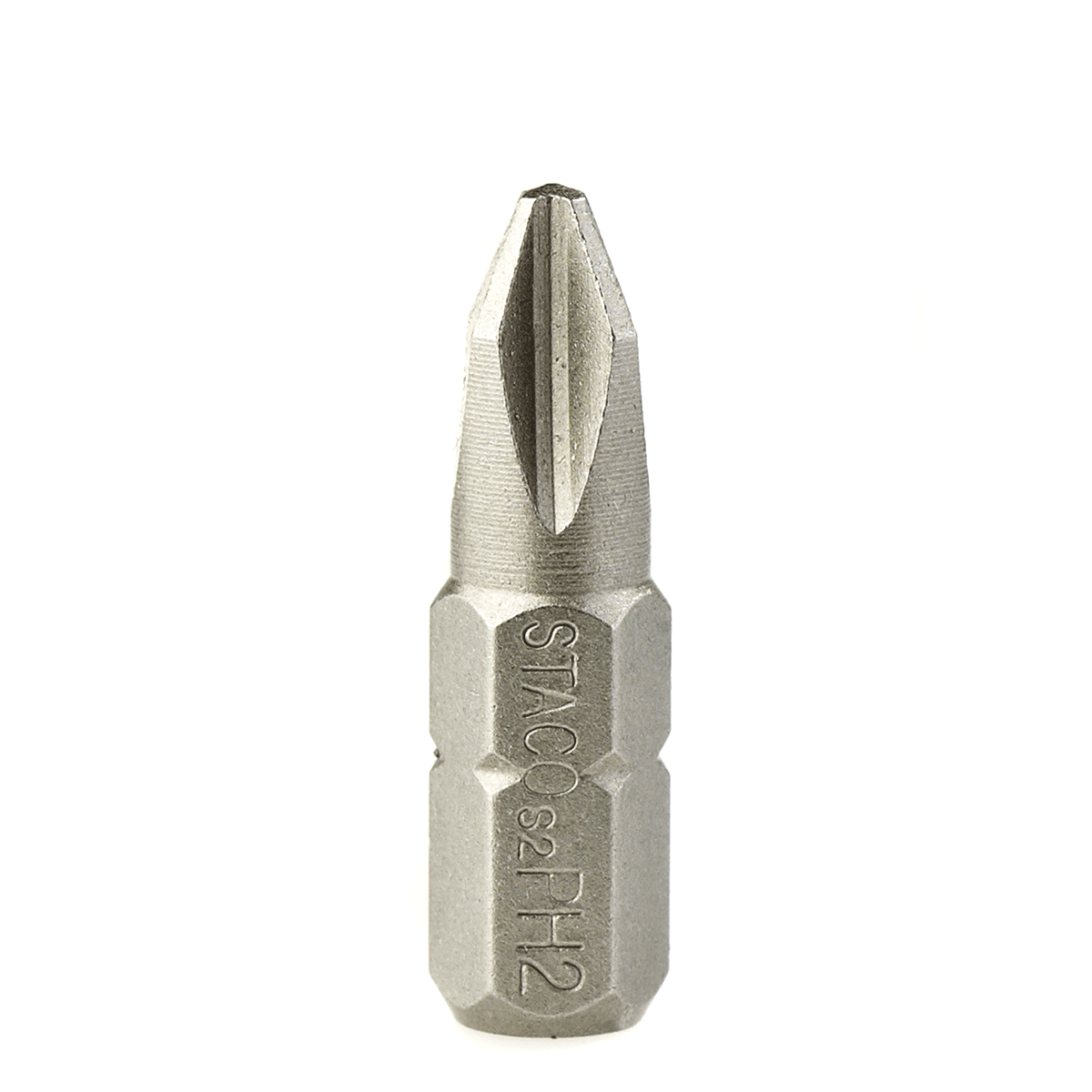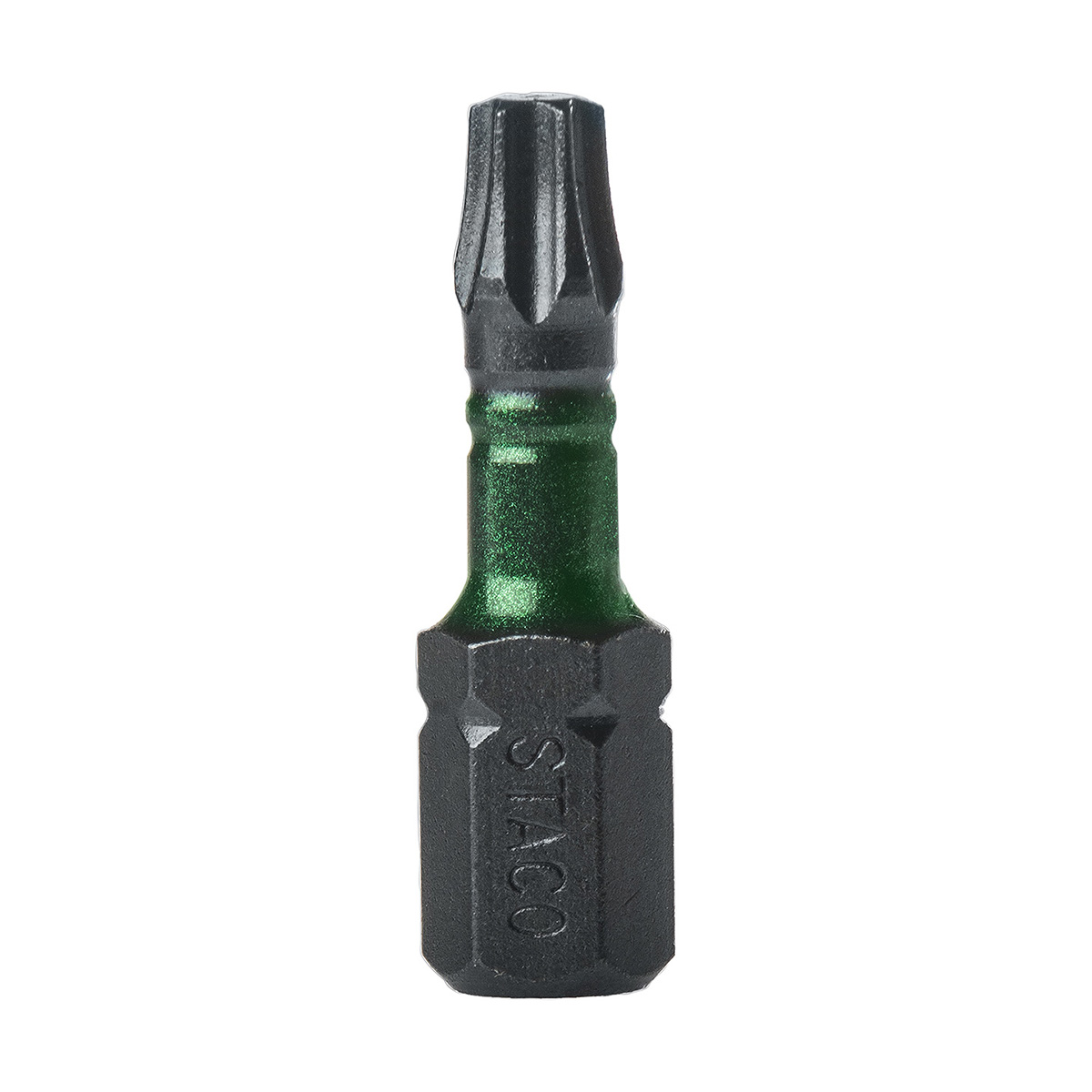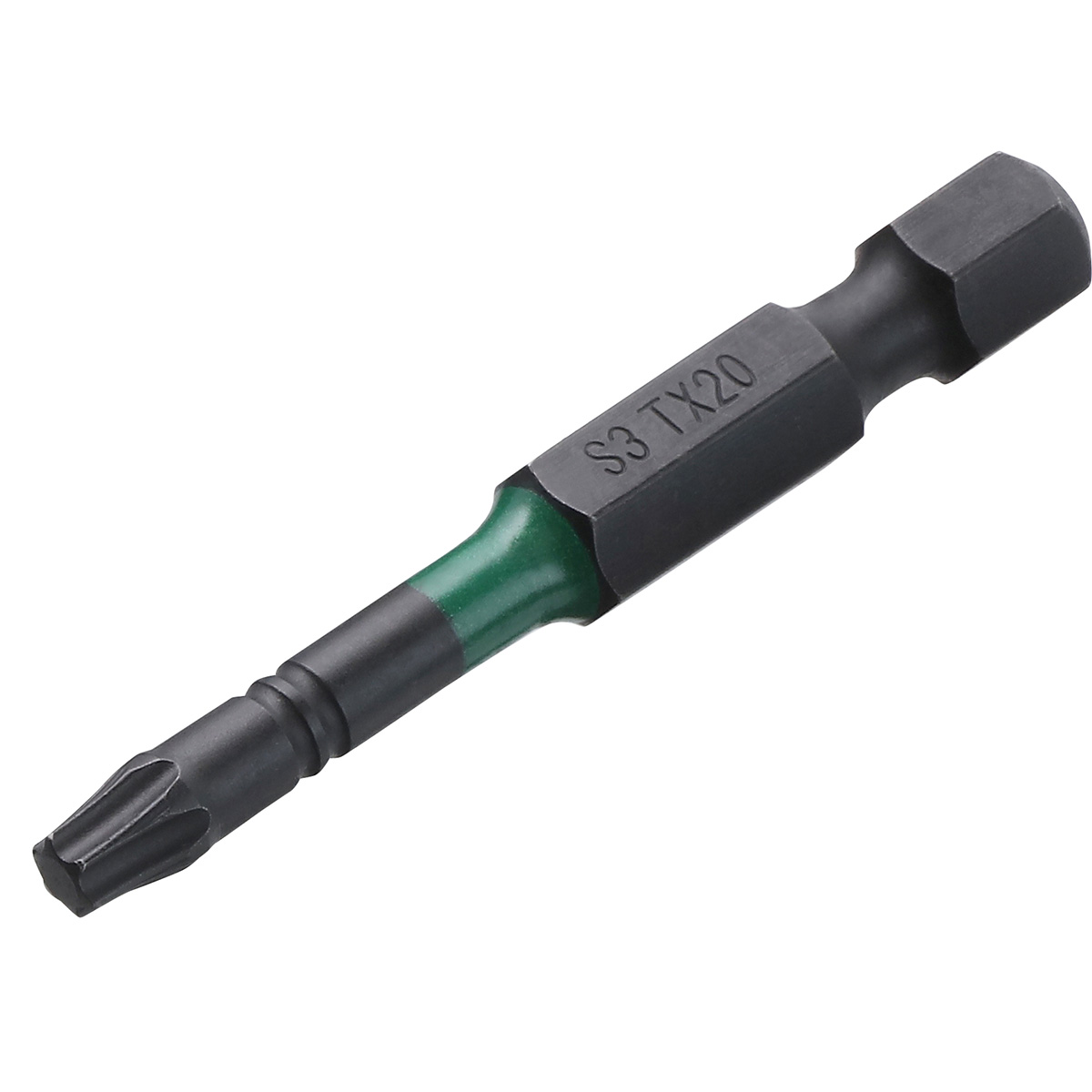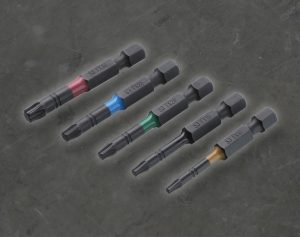The demand for strength in the little piece of metal that transmit power from machine to screw is higher than ever.
We look at the different types of power bits and the technology within them.
Almost all makers of power bits for the professional market are using S2 steel. The S2 steel alloy excels by containing wolfram. Wolfram hardens the alloy, which allow the power bit to withstand the high pressure from the power drill and extends the lifetime of the power bit significantly.
Because of the very hard steel alloy, the S2 bit will typically break in half rather than twisting when under too heavy pressure.
S2 bits are supplied in many lengths, typically 25 mm (1”). STACO produces S2 bits up to 89 mm (3,5”). The extra length allows the bit to reach screws in tight holes, which normally would be inaccessible with at normal extended bit holder. The construction of the long bit, will decrease the sturdiness of the metal, so it’s highly recommended to lower the effect of the machine when working with longer bits.
Click here to see STACOs selection of S2 bits.
Over the recent years, the power drills are becoming more and more powerful. Today almost all battery powered drills use 18V or even more.
To withstand the high pressure from the powerful power drills, we recommend using the extra tough bits in S3 steel. At STACO we call them Heavy Duty bits. The S3 steel contain silicone, which makes the alloy more lenient and allow the steel to give in to the higher torque pressure instead of breaking in half.
The STACO Heavy Duty bits is designed with a more lean shape than the regular power bits. The thin part of the bit – the torsion zone – combined with the silicone, provides an even higher torsion tolerance. This technology is called Torsion Technology.
Click here to see the STACOs selection of Heavy Duty Bits.
More and more professional users are using impact wrenches for screwing. Depending on conditions from materials and workload, even the Heavy Duty bits can be challenged. The impact wrenches work – unlike power drills – by forcing the rounds by impact. This technology provides very fast and efficient work, but it wears heavily on the power bits, even the ones with the special torsion zone.
When working with impact wrenches, we highly recommend using the STACO Heavy Duty Impact bits, which is designed for impact wrenches. The impact bits have a longer torsion zone which gives them a larger area to dispatch the high workload pressure from the impact wrench.
Click here to see the STACO Heavy Duty Impact Bits.
Color coded bits
A lot of suppliers offers screwdrivers, where the size is coded by the type of head on the screwdriver. This means, that all Torx heads are in one color and all Philips heads are in another color.
In close collaboration with the professional end users, STACO has since 2009, developed a unique color-coding solution for the most used types of heads and sizes. We reconned that most can quickly identify Torx bits from Pozidriv bits, slotted bits from Philips bits and so on. But when trying to identify a specific size, i.e. a TX20 bit from a TX25 bit, few can see the difference without taking a closer look.
With that in mind, STACO have identified the most used bit sizes and marked them each with their own unique color code (PH2, PZ2, TX10, TX15, TX20, TX25, TX30). By coding each size by a different color, it always easy to identify the size you need.
Click here to see STACOs selection of color-coded power bits.
